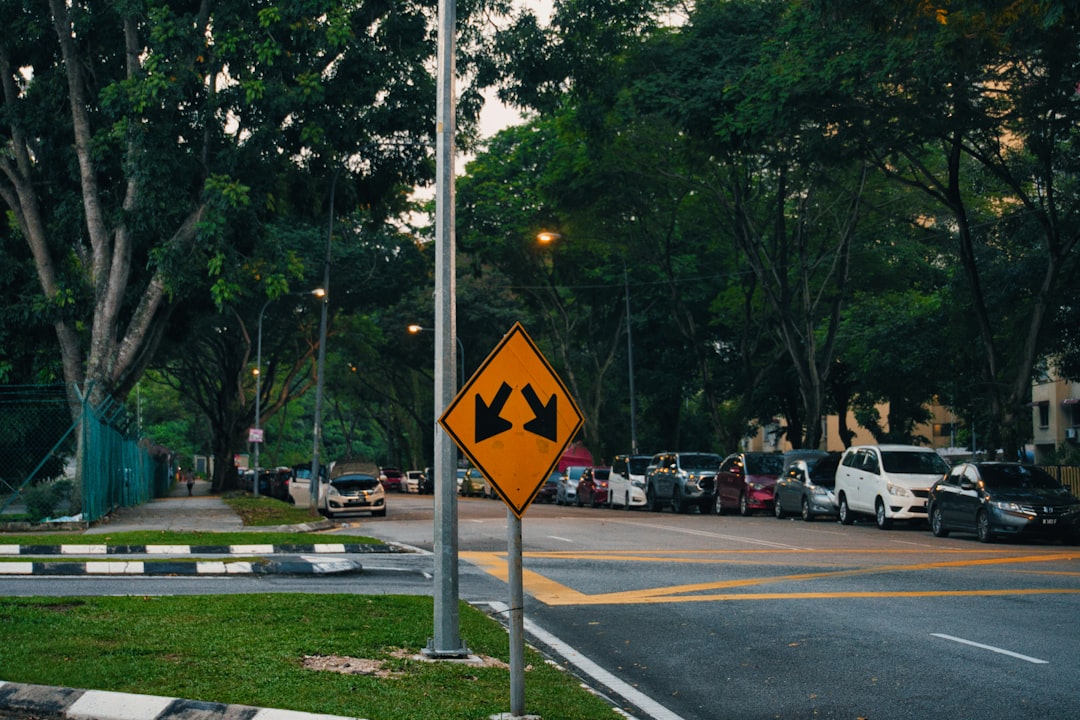Embarking on a journey to a new country is an exhilarating experience, filled with the promise of discovery and adventure. Yet, amidst the excitement of planning your itinerary, one crucial aspect often gets overlooked: road safety. While the thrill of exploring new landscapes is undeniable, understanding the nuances of road conditions and traffic accident rates across different nations is paramount for a safe and enjoyable trip.
Did you know that road traffic crashes are a leading cause of death globally, especially among young people? The risk can vary dramatically from one country to another, influenced by a complex interplay of factors like infrastructure, vehicle standards, and driver behavior. This comprehensive guide will delve into what drives these disparities, offer insights into global road safety trends, and equip you with practical tips to navigate foreign roads with confidence. By the end of this article, you’ll be better prepared to make informed decisions for your next international adventure.
Understanding Global Road Safety Metrics
When discussing traffic accident rates, it’s essential to understand how these statistics are compiled and what they truly represent. Different countries may use varying methodologies, making direct comparisons challenging but not impossible. Global organizations like the World Health Organization (WHO) work to standardize data collection to provide a clearer picture of road safety worldwide.
What Do Accident Rates Mean?
Road traffic fatality rates are typically expressed as the number of deaths per 100,000 population per year. This metric allows for a standardized comparison across countries of different sizes. Other important indicators include deaths per vehicle-kilometer traveled or per registered vehicle, which offer insights into the risk associated with driving itself.
For instance, a country with a high number of vehicles but excellent road infrastructure and strict enforcement might have a lower fatality rate per vehicle-kilometer than a country with fewer vehicles but poor road conditions and lax regulations.
Challenges in Data Collection
Collecting accurate and comprehensive road safety data is a complex task. Many low- and middle-income countries face significant challenges in recording all road traffic deaths and injuries due to limited resources, inconsistent reporting systems, and a lack of coordination between various agencies. This can lead to underreporting, meaning the true burden of road traffic fatalities might be even higher than official statistics suggest.
International efforts are continuously underway to improve data quality and comparability, providing a more reliable foundation for global road safety initiatives.

Key Factors Influencing Road Safety
Road safety is not merely a matter of chance; it’s a result of a multifaceted system involving infrastructure, vehicle technology, human behavior, and institutional responses. Understanding these contributing factors helps explain the wide variations in accident rates across the globe.
Infrastructure and Vehicle Standards
Well-maintained roads with clear signage, proper lighting, and designated pedestrian/cyclist paths significantly reduce accident risks. Countries with robust infrastructure investments tend to have safer roads. Similarly, stringent vehicle safety standards, including features like airbags, anti-lock braking systems (ABS), and electronic stability control (ESC), play a vital role in preventing crashes and mitigating their severity.
Many high-income countries mandate these safety features, while older or less regulated vehicles in other regions may lack them, increasing risk.
Driver Behavior and Enforcement
Human behavior is arguably the most critical factor. Speeding, drunk driving, distracted driving (e.g., mobile phone use), and not using seatbelts or helmets are major contributors to road fatalities. Effective law enforcement and public awareness campaigns are crucial for promoting safer driving habits. Countries with strict penalties and consistent enforcement often see lower rates of risky behavior.
Cultural norms around driving, such as adherence to traffic laws or tolerance for aggressive driving, also play a significant role.
Post-Crash Response
The speed and effectiveness of emergency medical services after a crash can dramatically impact survival rates and the severity of injuries. Countries with well-developed emergency response systems, including rapid ambulance dispatch and accessible trauma care, are better equipped to save lives. This “golden hour” after an accident is critical, and delays can turn non-fatal injuries into fatalities.

Regional Disparities in Road Fatalities
A stark reality in global road safety is the disproportionate burden of road traffic deaths in low- and middle-income countries (LMICs). Despite having a smaller share of the world’s vehicles, these countries account for the vast majority of road traffic fatalities.
High-Income vs. Low- and Middle-Income Countries
According to the World Health Organization’s Global Status Report on Road Safety 2023 (which presents data up to 2021), road traffic fatality rates are three times higher in low-income countries than in high-income countries. This disparity is attributed to several factors:
- Lack of robust legislation: Many LMICs lack comprehensive laws on key risk factors like speeding, drunk driving, and helmet/seatbelt use.
- Inadequate enforcement: Even where laws exist, enforcement may be weak or inconsistent.
- Unsafe vehicles: Many vehicles imported into LMICs do not meet international safety standards.
- Poor road infrastructure: Roads may be poorly designed, maintained, or lack basic safety features.
- Vulnerable road users: Pedestrians, cyclists, and motorcyclists often constitute a larger proportion of road traffic deaths in LMICs, highlighting the need for safer infrastructure for these groups.
Emerging Trends and Challenges
While global road traffic deaths have shown a slight decrease in recent years, progress is uneven. Urbanization and motorization in rapidly developing economies present new challenges, as road networks struggle to keep pace with increasing traffic volumes. The rise of new mobility options, such as e-scooters and ride-sharing services, also introduces new safety considerations that require proactive policy responses.
How Countries Are Improving Road Safety
Despite the challenges, many countries are making significant strides in improving road safety through a combination of policy, technology, and public engagement. The “Safe System” approach, which acknowledges that humans make mistakes and designs the road system to minimize the severity of crashes, is gaining traction globally.
Policy and Legislation
Strong legislation targeting key risk factors is fundamental. This includes setting and enforcing speed limits, mandating seatbelt and helmet use, combating drunk and distracted driving, and ensuring child restraints. Many countries have adopted Vision Zero initiatives, aiming for zero road fatalities and serious injuries, by focusing on systemic changes rather than blaming individuals.
Technological Advancements
Technology is a powerful ally in road safety. Advanced Driver-Assistance Systems (ADAS) like automatic emergency braking, lane-keeping assist, and blind-spot monitoring are becoming standard in new vehicles, significantly reducing crash risks. Smart infrastructure, such as intelligent traffic lights and real-time traffic monitoring, also contributes to safer road environments.
Public Awareness Campaigns
Educating the public about road safety risks and promoting responsible behavior is crucial. Effective campaigns can change attitudes towards speeding, drunk driving, and seatbelt use, fostering a culture of safety among all road users.

Practical Tips for Travelers
As a traveler, you have a significant role to play in ensuring your own safety on foreign roads. Being informed and proactive can make all the difference.
Researching Your Destination
Before you travel, take time to research the road safety conditions of your destination. Look for information from official government travel advisories, reputable news sources, and international organizations like the WHO. Pay attention to:
- Driving side: Left-hand vs. right-hand traffic.
- Local traffic laws: Speed limits, seatbelt laws, specific rules for turning or roundabouts.
- Road conditions: Are roads generally well-maintained? Are there unpaved roads or challenging terrains?
- Common hazards: Pedestrians, cyclists, animals, or specific weather conditions.
Safe Driving Practices Abroad
If you plan to drive, always prioritize safety:
- Rent a reliable vehicle: Choose a reputable rental company and inspect the vehicle for safety features and overall condition before driving.
- Understand local driving culture: Be aware that driving styles can vary significantly. Some countries may have more aggressive drivers or less predictable traffic flows.
- Avoid driving at night: Poor lighting, unlit vehicles, and increased risk of impaired drivers can make night driving particularly hazardous.
- Never drive under the influence: Alcohol and drugs impair judgment and reaction time.
- Always wear seatbelts: Ensure all passengers are buckled up, and children are in appropriate restraints.
Using Local Transportation Wisely
If you opt for taxis, ride-sharing, or public transport:
- Choose licensed operators: Use official taxis or reputable ride-sharing apps.
- Check vehicle condition: If possible, quickly assess the vehicle’s safety (e.g., working seatbelts).
- Be aware as a pedestrian: Always use sidewalks where available, cross at designated crossings, and be highly vigilant, especially in areas with heavy traffic or less pedestrian-friendly infrastructure.
Factors Influencing Road Safety: A Snapshot
This table provides a simplified overview of how various factors generally correlate with road safety outcomes. It’s important to remember that real-world scenarios are complex and involve multiple interacting elements.
| Factor | Characteristics of Safer Countries | Characteristics of Less Safe Countries |
|---|---|---|
| Road Infrastructure | Well-maintained, clear signage, segregated lanes, pedestrian facilities. | Poorly maintained, unclear markings, lack of pedestrian/cyclist separation. |
| Vehicle Safety | Strict import standards, mandatory safety features (ABS, airbags, ESC). | Older fleets, fewer safety features, lax import regulations. |
| Legislation & Enforcement | Comprehensive laws on speed, drunk driving, seatbelts; consistent enforcement. | Weak or fragmented laws, inconsistent or corrupt enforcement. |
| Emergency Response | Rapid ambulance dispatch, accessible trauma centers, trained personnel. | Slow response times, limited medical facilities, lack of specialized trauma care. |
| Public Awareness | Strong safety culture, effective public campaigns, driver education. | Limited awareness, risky driving norms, insufficient education. |
Conclusion: Travel Smart, Travel Safe
Road safety is a global challenge with profound implications for travelers. While the statistics on accident rates can seem daunting, understanding the underlying factors empowers you to make safer choices. From the quality of a country’s infrastructure to the behavior of its drivers, every element contributes to the overall safety landscape.
As you plan your adventures in 2025 and beyond, remember that awareness is your best travel companion. By researching your destination’s road conditions, adhering to local laws, and practicing defensive driving or choosing reliable transportation, you significantly reduce your risk. Your journey should be memorable for its incredible experiences, not for unforeseen hazards.
Your Safety, Our Priority!
What are your top concerns when navigating roads in a new country?
Share your experiences and tips in the comments below!
For further reading and detailed statistics, consider exploring these resources:
- World Health Organization: Global Status Report on Road Safety 2023 – A comprehensive report on global road safety data and trends.
- World Bank: Road Safety – Information on the World Bank’s initiatives and data related to road safety in developing countries.
- United Nations Economic Commission for Europe (UNECE): Road Safety – Focuses on road safety efforts and regulations, particularly in the UNECE region.
